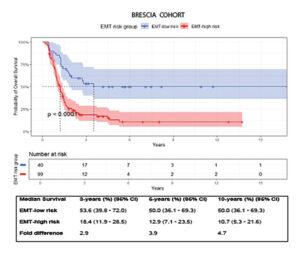A prognostic signature to predict outcome in ovarian cancer patients

Applications: Ovarian cancer prognosis, ovarian cancer patient stratification
The Oxford Classic enables accurate prediction of ovarian cancer prognosis via the identification of the “EMT-high” subtype gene signature. This will help identify new treatment options for poor outcome cancers and assist in the stratification of patients into promising new clinical trials.
The graph is from Cancer Cell paper Volume 37, Issue 2, 10 February 2020, Pages 226-242.e7
| Features | Benefits |
|
|
|
|
|
|
|
|
about this technology
© Oxford University Innovation

